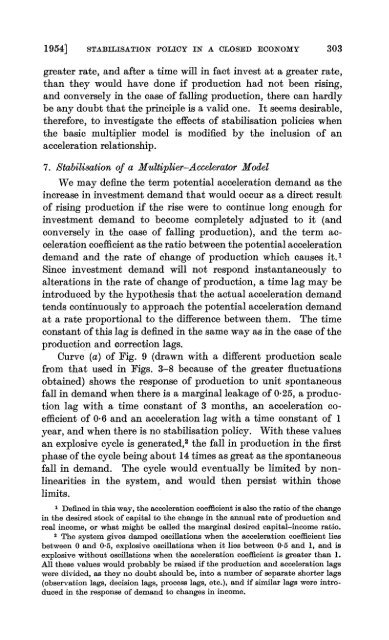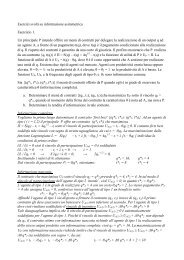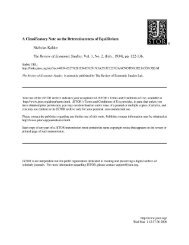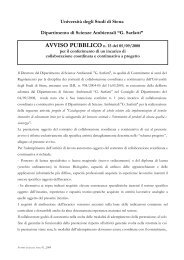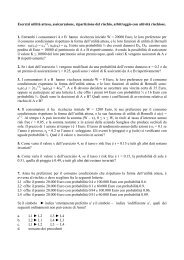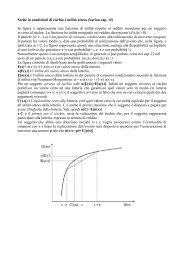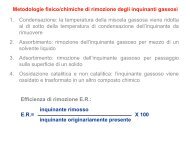Stabilisation Policy in a Closed Economy Author(s): A. W. Phillips ...
Stabilisation Policy in a Closed Economy Author(s): A. W. Phillips ...
Stabilisation Policy in a Closed Economy Author(s): A. W. Phillips ...
You also want an ePaper? Increase the reach of your titles
YUMPU automatically turns print PDFs into web optimized ePapers that Google loves.
1954] STABILISATION POLICY IN A CLOSED ECONOMY 303<br />
greater rate, and after a time will <strong>in</strong> fact <strong>in</strong>vest at a greater rate,<br />
than they would have done if production had not been ris<strong>in</strong>g,<br />
and conversely <strong>in</strong> the case of fall<strong>in</strong>g production, there can hardly<br />
be any doubt that the pr<strong>in</strong>ciple is a valid one. It seems desirable,<br />
therefore, to <strong>in</strong>vestigate the effects of stabilisation policies when<br />
the basic multiplier model is modified by the <strong>in</strong>clusion of an<br />
acceleration relationship.<br />
7. <strong>Stabilisation</strong> of a Multiplier--Accelerator Model<br />
We may def<strong>in</strong>e the term potential acceleration demand as the<br />
<strong>in</strong>crease <strong>in</strong> <strong>in</strong>vestment demand that would occur as a direct result<br />
of ris<strong>in</strong>g production if the rise were to cont<strong>in</strong>ue long enough for<br />
<strong>in</strong>vestment demand to become completely adjusted to it (and<br />
conversely <strong>in</strong> the case of fall<strong>in</strong>g production), and the term ac-<br />
celeration coefficient as the ratio between the potential acceleration<br />
demand and the rate of change of production which causes it.'<br />
S<strong>in</strong>ce <strong>in</strong>vestment demand will not respond <strong>in</strong>stantaneously to<br />
alterations <strong>in</strong> the rate of change of production, a time lag may be<br />
<strong>in</strong>troduced by the hypothesis that the actual acceleration demand<br />
tends cont<strong>in</strong>uously to approach the potential acceleration demand<br />
at a rate proportional to the difference between them. The time<br />
constant of this lag is def<strong>in</strong>ed <strong>in</strong> the same way as <strong>in</strong> the case of the<br />
production and correction lags.<br />
Curve (a) of Fig. 9 (drawn with a different production scale<br />
from that used <strong>in</strong> Figs. 3-8 because of the greater fluctuations<br />
obta<strong>in</strong>ed) shows the response of production to unit spontaneous<br />
fall <strong>in</strong> demand when there is a marg<strong>in</strong>al leakage of 0-25, a produc-<br />
tion lag with a time constant of 3 months, an acceleration co-<br />
efficient of 0*6 and an acceleration lag with a time constant of 1<br />
year, and when there is no stabilisation policy. With these values<br />
an explosive cycle is generated,2 the fall <strong>in</strong> production <strong>in</strong> the first<br />
phase of the cycle be<strong>in</strong>g about 14 times as great as the spontaneous<br />
fall <strong>in</strong> demand. The cycle would eventually be limited by non-<br />
l<strong>in</strong>earities <strong>in</strong> the system, and would then persist with<strong>in</strong> those<br />
limits.<br />
1 Def<strong>in</strong>ed <strong>in</strong> this way, the acceleration coefficient is also the ratio of the change<br />
<strong>in</strong> the desired stock of capital to the change <strong>in</strong> the annual rate of production and<br />
real <strong>in</strong>come, or what might be called the marg<strong>in</strong>al desired capital-<strong>in</strong>come ratio.<br />
2 The system gives damped oscillations when the acceleration coefficient lies<br />
between 0 and 0 5, explosive oscillations when it lies between 0.5 and 1, and is<br />
explosive without oscillations when the acceleration coefficient is greater than 1.<br />
All these values would probably be raised if the production and acceleration lags<br />
were divided, as they no doubt should be, <strong>in</strong>to a number of separate shorter lags<br />
(observation lags, decision lags, process lags, etc.), and if similar lags were <strong>in</strong>tro-<br />
duced <strong>in</strong> the response of demand to changes <strong>in</strong> <strong>in</strong>come.


